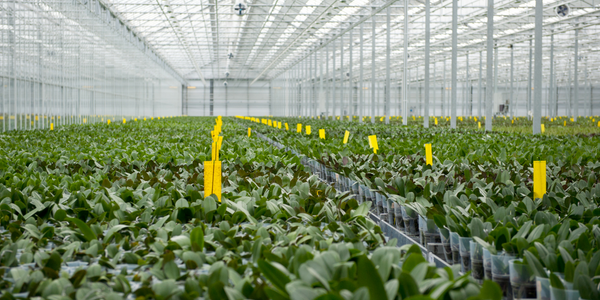Download PDF
A Bountiful Harvest: When LoBue Citrus Switched to a Food Traceability Solution from Intermec by Honeywell, Packing Accuracy Jumped to 99 Percent
Technology Category
- Functional Applications - Inventory Management Systems
- Functional Applications - Remote Monitoring & Control Systems
- Networks & Connectivity - RFID
Applicable Industries
- Food & Beverage
- Agriculture
Applicable Functions
- Warehouse & Inventory Management
- Quality Assurance
Use Cases
- Inventory Management
- Track & Trace of Assets
- Predictive Maintenance
Services
- System Integration
- Software Design & Engineering Services
The Challenge
LoBue Citrus, a significant player in the California citrus industry, faced challenges with their manual produce traceability program. The manual process was resource-intensive and prone to errors, which could impact their ability to meet the Produce Traceability Initiative (PTI) requirements. The need for a more efficient and accurate system became evident, especially given the scale of their operations, which involved exporting a significant portion of their produce to Asia. The company sought a solution that would automate their traceability process, improve inventory accuracy, and reduce the time required for trace-back operations.
About The Customer
LoBue Citrus is a family-run grower and distributor of oranges, contributing approximately four to five percent of the California citrus industry. The company handles between four and five million boxes of oranges annually, with 40 percent of their product exported to Asia. Based in Lindsay, California, LoBue Citrus has been a key player in the citrus market, focusing on quality and efficiency in their operations. The company recognized the need to modernize their produce traceability program to maintain their competitive edge and ensure compliance with industry standards.
The Solution
LoBue Citrus partnered with FoodLogiQ to implement an automated traceability system using Intermec by Honeywell Smart Printing solutions. The system included Intermec by Honeywell PM4i industrial smart printers, which did not require an additional computer to print labels, making it a cost-effective and user-friendly solution. Workers used Intermec by Honeywell SR30 handheld scanners to scan barcodes generated by FoodLogiQ, which then instructed the PM4i printers on what labels to print. The system also included Intermec by Honeywell PB50 mobile printers for generating pallet tags. This setup allowed workers to move the printers to the boxes that required tags, streamlining the labeling process. The automated system provided real-time inventory control, enabling LoBue Citrus to make informed decisions in sales and production. The integration of FoodLogiQ's PTI solution with Intermec by Honeywell technology ensured that all aspects of traceability, food safety, and documentation were covered, allowing LoBue Citrus to focus on their core business.
Operational Impact
Quantitative Benefit
Related Case Studies.

Case Study
Intelligent Farming with ThingWorx Analytics
Z Farms was facing three challenges: costly irrigation systems with water as a limited resource, narrow optimal ranges of soil moisture for growth with difficult maintenance and farm operators could not simply turn on irrigation systems like a faucet.

Case Study
The Kellogg Company
Kellogg keeps a close eye on its trade spend, analyzing large volumes of data and running complex simulations to predict which promotional activities will be the most effective. Kellogg needed to decrease the trade spend but its traditional relational database on premises could not keep up with the pace of demand.

Case Study
HEINEKEN Uses the Cloud to Reach 10.5 Million Consumers
For 2012 campaign, the Bond promotion, it planned to launch the campaign at the same time everywhere on the planet. That created unprecedented challenges for HEINEKEN—nowhere more so than in its technology operation. The primary digital content for the campaign was a 100-megabyte movie that had to play flawlessly for millions of viewers worldwide. After all, Bond never fails. No one was going to tolerate a technology failure that might bruise his brand.Previously, HEINEKEN had supported digital media at its outsourced datacenter. But that datacenter lacked the computing resources HEINEKEN needed, and building them—especially to support peak traffic that would total millions of simultaneous hits—would have been both time-consuming and expensive. Nor would it have provided the geographic reach that HEINEKEN needed to minimize latency worldwide.

Case Study
Greenhouse Intelligent Monitoring and Control Solution
Farming Orchids is the most successful form of precision farming in Taiwan, and also the most exported flower. Orchids need a specific temperature and humidity conditions to grow and bloom, and its flowering time may not be in line with market demands, so the price collapses when there is overproduction. Therefore, some farmers began to import automated greenhouse control systems for breeding and forcing, which not only improves quality, but also effectively controls the production period and yield to ensure revenue. In 2012, an orchid farmer built a Forcing Greenhouse of about 200 pings (approximately 661 Square Meters) in Tainan, Taiwan. The system integrator adopted Advantech’s APAX-5000 series programmable automation controllers to build the control platform, coupled with Advantech WebAccess HMI/SCADA software, to achieve cloud monitoring. The staff of the orchid field can monitor important data anytime via smart phone, iPad, and other handheld devices, and control the growth and flowering conditions. System requirements: In the past, most environmental control systems of orchid greenhouses in Taiwan used PLCs (Programmable Logic Controller) with poorscalability and control, and could not be connected to the Internet formonitoring from the cloud. For advanced database analysis and networking capability, the PC platform must be adopted. Therefore, PAC Systems (Programmable Automation Controller) with both PLC programming capabilities andPC functions is a better choice.The environmental control of the Orchid greenhouse switches on and off devices like fan, shade net, cooling/heat pump, liquid flow control, water-cooling wall etc. It is controlled by a control panel of electric controllers, and is driven by a motor, to adjust the greenhouse temperature, humidity, and other environmental conditions to the set parameters.







